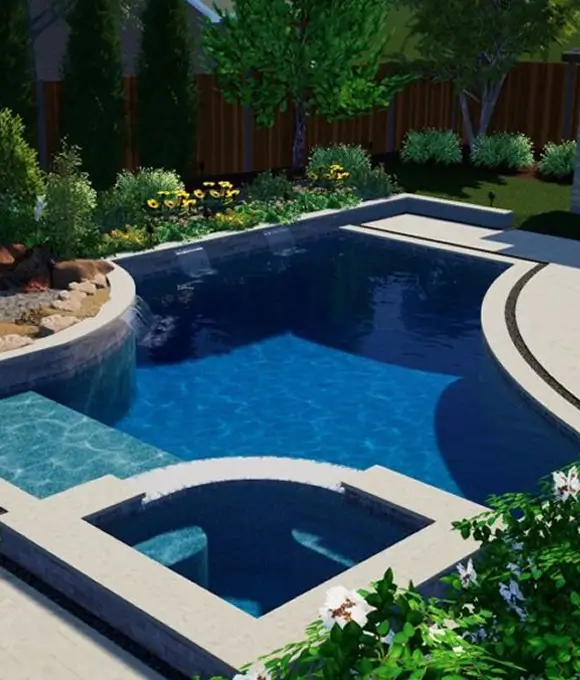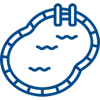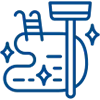Pool Builder Dallas – Custom Pools & Expert Craftsmanship
Request a Free
Estimate Today
Trusted Pool Builders in Dallas
At Integrity Pools, we don’t just build pools—we create spaces where families make lasting memories. As a trusted Dallas pool builder, we specialize in custom pool design, expert pool construction, and complete outdoor transformations. Whether you’re starting from scratch or upgrading an existing pool, our team is here to bring your vision to life.

Why Choose Integrity Pools?
Family-owned, customer-focused
We treat every project like it’s our own backyard. Our personal approach leads to long term relationships with our customers as we go the extra mile.
Decades of experience
Our team specializes in custom pools designed to match your lifestyle.
Full-service solutions
From pool maintenance services to complete renovations, we provide long-term care.
Reliable pool service
We ensure your investment stays in top condition with ongoing pool care and upkeep.
Outdoor living experts
We consider your entire outdoor living space when creating a custom design for your pool.
The Building Process
Free In-Person Consultation
Contact us for a free consultation to discuss your design ideas, budget, and timeline. A property survey is required before the design process begins.
Custom 3D Design & Itemized Estimate
We use advanced 3D rendering software to bring your dream pool to life before construction begins. Every estimate is fully itemized, so you know exactly what’s included in your project.
Permits, Inspections & Full Backyard
We handle all permits and inspections to ensure your project runs smoothly. Whether it’s a basic pool and spa or a full outdoor living transformation, we manage every detail.
Your Dream Pool Comes to Life
The finished product? A stunning swimming pool designed for relaxation, entertainment, and years of enjoyment.

Custom Features & Outdoor Living Enhancements
View our virtual showroom to see our extensive selection of the following options.

New Pool Builds
Complete Backyard Installations
- Custom pool and spa construction
- Water features like waterfalls and bubblers
- Outdoor living enhancements including grill stations and covered patios
- Soil stabilization for pool shell and deck areas
- Shell waterproofing for long-term durability
- Full automation and color LED lighting for modern convenience
Pool Remodeling & Upgrades
We are also a full-service pool remodeling company, offering:
- Surface upgrades: White plaster, pebble finishes
- Tile enhancements: Ceramic and glass tile upgrades
- Coping options: Flagstone, Lueders, travertine, and marble
- Deck transformations: Total deck tear-outs, paver decks, and concrete overlays
- Full equipment pad redos to modernize pool systems
- Soil stabilization services to prevent shifting and foundation issues
Pool Maintenance & Ongoing Care
Pool Maintenance & Long-Term Care

Weekly Pool Cleaning Service
Enjoy hassle-free pool ownership with our weekly pool cleaning service. We handle:
- Skimming, brushing, and vacuuming to keep your swimming pool debris-free.
- Water chemistry balancing for safe, crystal-clear water.
- Equipment checks to prevent costly repairs.
Leak Detection Service
A hidden pool leak can lead to major issues. Our leak detection service quickly identifies and resolves leaks in your pool shell, plumbing, or equipment, preventing damage and excess water loss.
Pool Equipment Repair & Filter Cleaning
Efficient equipment is key to low-maintenance swimming pools. We provide:
- Equipment repair for pumps, heaters, and automation systems.
- Filter cleaning services for cartridge, DE, and sand filters to improve circulation and water clarity.
Seasonal Pool Maintenance
Proper maintenance changes with the seasons. We help homeowners prepare for summer with equipment inspections, water balancing, and filter cleaning. Before winter, we provide winterizing services to protect plumbing, maintain chemical balance, and prevent freezing damage.
Let's Get you to the Right Place for the Best Dallas Pool Service
Select the type of Dallas pool service you need below, and let us show you how a pool company with Integrity can take care of your swimming pool needs.
Start Your
Pool Project Today
A Dallas Pool Company Committed to Quality
As a leading pool contractor in Dallas TX, we take pride in delivering quality craftsmanship, exceptional service, and unparalleled expertise in pool building. Our passion is creating custom pools that homeowners can absolutely love for years to come. With every build, we strive to convey our core values of love, service, and excellence.
Our Promise to You
We are committed to delivering outstanding customer service from start to finish. From design to pool construction and ongoing maintenance, we’ll be open and honest with you every step of the way. You can count on us for dependable service and beautiful results.
Financing & Scheduling

Loan Options Available
Our team can assist you with applying for home equity loans and unsecured personal loans. There are additional alternative financing options we can talk through, including: pool financing programs, credit cards, personal savings, and home improvement loans.
Schedule Your Consultation
Ready to start? Contact Integrity Pools today to discuss your future pool and see how we can bring your vision to life. Our dedicated team is here to ensure your project is completed with precision, professionalism, and care.
Whether you’re in North Texas, the Dallas area, or beyond, we’re ready to help you build a custom pool that fits your lifestyle. Get started today by filling out our online form.
Let’s Get Your New Pool Started
Start the process and get in touch
Contact us by calling us, emailing us or filling in our online form
We’ll provide a detailed proposal
Including a detailed breakdown of the final cost
Review your 3D design
Now’s your chance to make sure everything is looking exactly as you hoped it would!
Let the build start!
Our skilled crew will arrive to start turning your dreams into reality!






